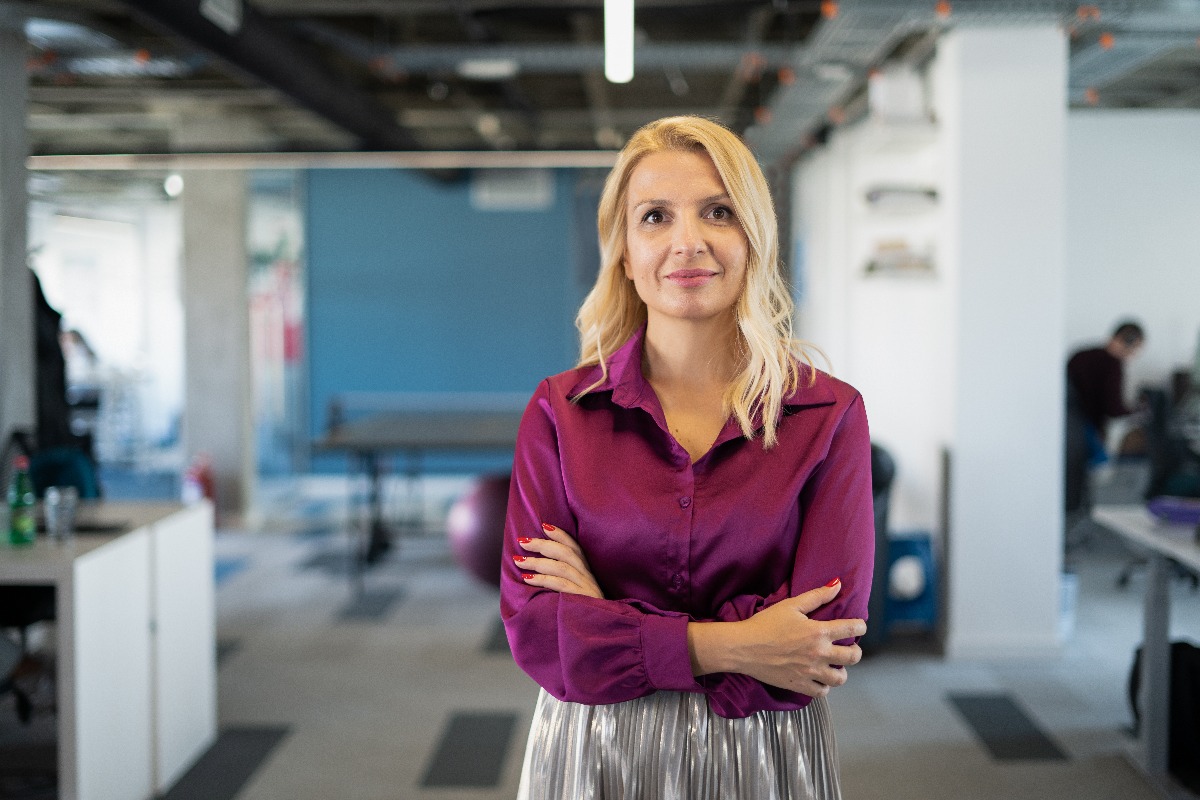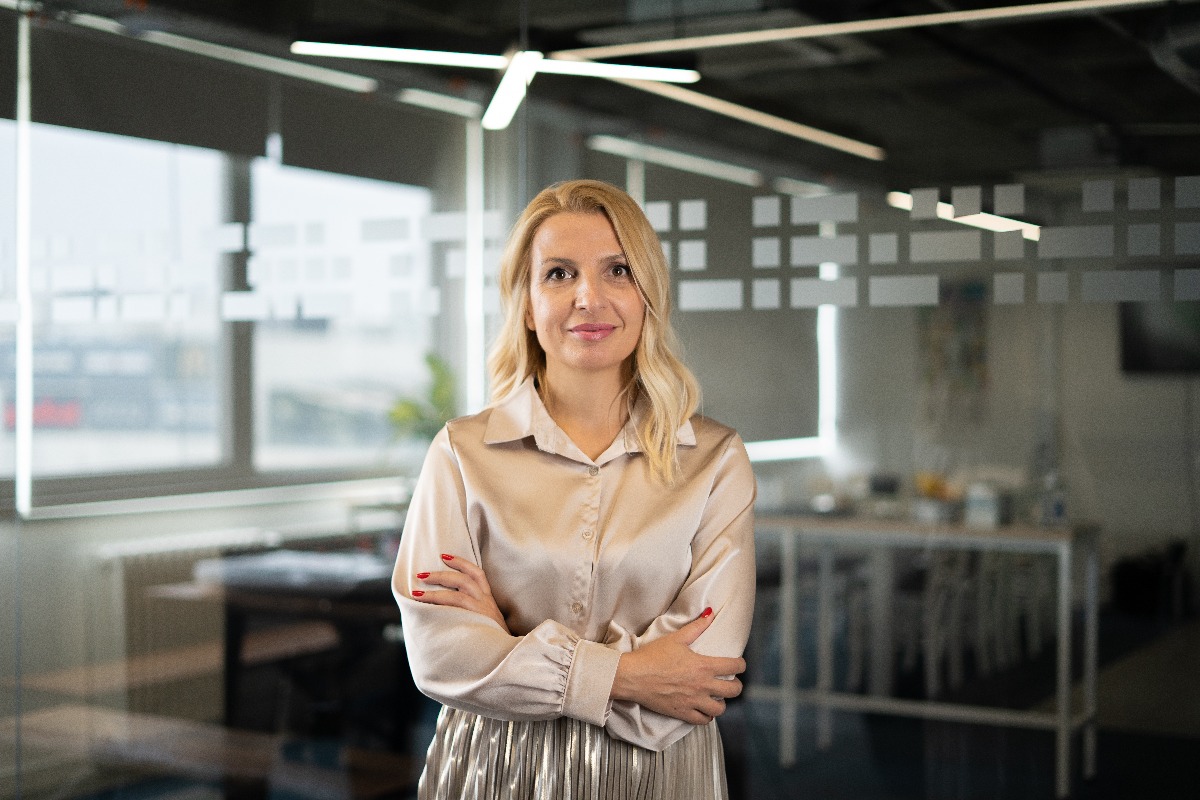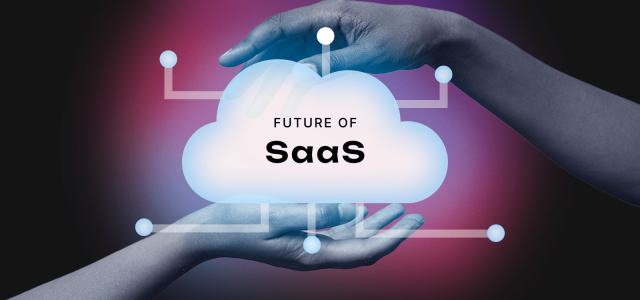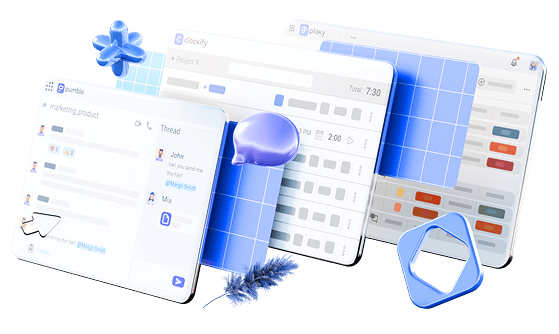To say that the mass migration to remote work caused by the pandemic has produced a seismic shift in the business world would be an understatement. We can only liken it to the conveyor belt in how it fundamentally changed how we work on a global scale.
And — despite being forced into this situation — companies have found success in remote work. Yet now, with the pandemic dying down, we’re seeing a trend of many companies — with big tech seemingly leading the charge — mandating a full-time return to offices.
Despite this, CAKE.com — a product-based company that managed to rise into the ranks of unicorn companies during the pandemic — is showing no signs of ditching its remote-first model.
To find out the secret behind the success of their remote-first model — as well as what challenges they faced while implementing it — we’ve spoken to Biljana Rakić, the VP of Human Capital at CAKE.com.
Enjoy her insight into the intricacies of this work model — and her predictions regarding the future of work.
CAKE.com’s remote work beginnings and challenges
For starters, we asked Biljana about how and why remote work was introduced to CAKE.com — and touched upon the challenges HR and other teams encountered when everyone first started working remotely.
You joined CAKE.com during the early days of the COVID-19 pandemic when the company was making the transition to remote work. Was this transition challenging?
Let me set the stage for you.
I joined the company on March 1st — for reference, Serbia went into full lockdown on March 18th. Seeing the situation in the country getting worse, we quickly reached a decision on March 10th that the company would go fully remote starting from March 11th — making us one of the first companies in the country to transition to fully remote work.
We didn’t close down the office, but people only came in to collect their belongings.
This was the period when the Belgrade Fair was transformed into a temporary Coronavirus field hospital. There was a state of panic — we knew the situation was bad, but no one knew exactly how bad.
We left the office with laptops in hand and waited at home, with no idea what was going to happen.
We had the benefit of our jobs being easily transferable to a remote environment — but this doesn’t mean the transition wasn’t challenging, especially for me.
What was the biggest challenge you faced while switching to remote work?
I used to be an HR rep who thought that, if you weren’t sharing a room with your interlocutor and speaking face-to-face, you weren’t really doing HR work.
I had friends who were in HR in companies that had been remote-first for many years prior to the pandemic, and I thought they couldn’t have been doing HR work properly — that it simply wasn’t possible until you’ve met someone in-person and had coffee or beer together.
But I soon discovered that remote work still leaves a lot of space for creativity and social interaction — you just have to approach it differently.
As a remote work skeptic, how did you deal with becoming the head of HR of an entire newly remote company?
It was difficult, but — luckily — I love being challenged.
The first thing I needed to do was assess the current situation — see what our strengths and weaknesses were; play into the former while working on the latter. I also looked to see what other experts in this field suggested and how these suggestions worked for them.
This helped me identify the techniques and methodologies that we could use to reach company goals.
But even more important than all of this was to get to know the system I’d become a part of and to meet all the employees individually — to understand their expectations and dispel their doubts.
You can’t be in HR and not know the employees — in this department, knowing the employees is paramount. In other departments, other people will reach out to you. But in HR, you’re the one reaching out to them.
So, I made it my mission to get to know everyone. At the time, the company had fewer than 100 employees.
I made a small Employee Value Proposition and scheduled one-on-one meetings with everyone.
First, I’d say something about myself that they could find important. They were also free to ask me whatever they wanted.
Then, I asked them questions like:
- What’s the first thing that comes to mind when you think of CAKE.com?
- What values do you believe are upheld at this company?
- If you had a choice between CAKE.com and another company, why would you choose CAKE.com?
- What can I or my department do to make your job more pleasant and/or easier?
The reason I did this was to make people aware of why they were working at this company and what they loved about it.
Some of these meetings lasted 20 minutes, while others lasted 2 hours. The people felt respected.
As someone who hasn’t done this before, how did you manage an HR team remotely?
Managing an HR department under these circumstances — remote, online, via Google Meet — was, above all else, challenging.
Onboarding had to be completely revamped. We had to first decide on everything we wanted the new onboarding to accomplish and then look for methodologies which fit our company culture.
This was also a great time to do some HR networking. We learned a lot and exchanged many ideas and experiences with HR departments from other companies after the country had gone into lockdown.
As for the HR team specifically, we spent a lot of time educating ourselves and supporting one another. We were determined to be better coming out of lockdown than we were going into it, with results to prove this.

Did you find it hard to suddenly have to collaborate remotely? What was the first thing you had to do?
During those one-on-one meetings, whenever I asked employees what HR can do for them, they’d respond with a question asking what they could expect HR to do for them.
They expected — and needed — support, but they still had trouble verbalizing what this support should entail.
The first thing we did was provide home office equipment (chairs, desks, monitors, etc.). Then, we changed some work rules from how they were in the office. We also provided paid psychotherapy and encouraged employees to make use of it.
But the most important thing we did was establish a trusting remote work relationship. This resulted in reduced stress.
Did CAKE.com employees find it difficult to make the transition to remote work?
Yes, and the first indicator that they were having difficulty adjusting was hyperproduction.
Trapped in their homes under lockdown, they couldn’t go anywhere or socialize with people outside their household unless they used their computers — and their computers were their jobs.
So, when the kids went to bed, they’d sit at their computers and keep working, even though they were already done for the day.
Productivity went up across all departments at the start of the pandemic.
As soon as we noticed this, we started actively working on protecting the mental health of our employees by suggesting different working schedules to prevent burnout.
Looking back, it seems it was most difficult for working parents to adjust to remote work. How did CAKE.com help employees with kids strike a remote work-life balance?
Asking “How can I help you?” is the best way to help someone — so this is the methodology we used.
When we asked our working parents this, they suggested a couple of practical solutions. One of them was to work in pseudo shifts.
For example, if their spouse had to work the first shift at another company, they’d prefer to start working at noon. This made it easier for them to take care of their children and overall function as a household.
We sought individualized solutions to such problems as best as we could. The feedback we got showed that our employees felt valued and supported.
The benefits and changes CAKE.com saw with introducing a remote-first work model
Next, we talked with Biljana about how CAKE.com evolved when remote work was introduced — covering both the general changes and the benefits.
Was CAKE.com always flexible with working hours?
We went through several phases.
Prior to the pandemic, we were flexible insofar as we had the option to start working between 8 and 9 a.m. Then, from the moment we started working for the day, we would work for 8 hours, a 30-minute lunch break included.
Then the pandemic hit, and we had to rethink everything.
I had many friends who were HR representatives at companies that had been fully remote for a long time before the pandemic, so I asked them for advice.
What they told me was that we had to have a system in place — that the flexibility of remote work was only good if you knew which parts could be flexible. You still had to have rules in place because you can’t have a good system without rules.
So, for HR, we started by holding job interviews at 10 a.m. and 1 p.m. every day.
This helped us establish some routines. Routines were very important to have during the COVID lockdown when you also had to watch your kids, cook lunch, and \ or go grocery shopping during your workday.
We would establish rules like this, see if they worked, and then keep them or change them accordingly.
All this required us to be flexible, adaptable, and agile. To help us be more effective while working remotely, we had to react quickly, while still juggling the needs of employees and their individual circumstances with our big-picture objectives.
At first, the entire company worked 9 to 5. The goal was to make it so that everyone could disconnect from work after 5 p.m.
This was before the lockdown and curfews.
And you got more flexible after the country went into lockdown?
After the 6 p.m. curfew was established, we switched to a new rule — everyone would work from 12 p.m. to 4 p.m. You had to be online and do your job during these 4 hours. The rest of your working day you could organize any way you liked. This meant you had the entire morning and those 2 hours after work before curfew started to do whatever you needed to do outside of work.
Productivity remained good throughout these iterations. We saw that our employees were respectful not just toward the company rules, but also toward their colleagues. So, the decision was approved that each team could dictate their own remote working hours.
This decision is still in power today, because trust and respect are important for the growth of our products and company. Every team can create internal shared working hour guidelines that fit their team dynamic and goals.

You said the pandemic and lockdown didn’t negatively affect productivity at the company — quite the opposite in fact — but did it negatively affect the well-being of employees? And, if so, how has the company tried to help them?
Our CEO, Nenad Milanović, has always reminded us that our health should be our first priority — not just physical health, but overall wellness that includes mental health as well.
To this end, at first, we even offered free, in-house psychotherapy.
It was also fortunate that the Serbian Society of Psychotherapists established a whole online network to support free aid and counseling during COVID. They had over 200 experts, everything was done remotely, and you could choose to speak with an expert who wasn’t from your city — in case you wanted to talk to someone you would never have the chance to run into on the street.
We spread the word about this network and a lot of people took to it.
Were there any techniques you employed to simulate some office work benefits in a remote environment?
I think it’s important for new employees to have someone who can explain a few things about the company in a casual setting. In an office, this would happen naturally, through watercooler talk, but watercooler talk doesn’t happen spontaneously when you’re a new remote employee.
So, to simulate this, we use the work buddy system, where we pair new employees with those who’ve been with the company for some time to have scheduled water cooler talks via video chat. This has proved very useful — it’s like new employees have their very own company insider to show them the lay of the land.
And you can’t do this in a formal setting. HR covers onboarding and team leaders answer questions about how to do your job, but a work buddy can clue you in on other people. They can introduce you, explain how certain things work in the company, fill in unclear information, and encourage you to actively participate in company activities.
Reasons for sticking to a remote-first work model after the pandemic
Moving forward, we talked with Biljana about the reasons CAKE.com persisted with remote work — even when it was no longer mandated by COVID-19 lockdowns.
It has been two years since the pandemic started and CAKE.com is still a remote-first company. You still have offices in two cities, but these clearly weren’t designed to accommodate the entire company. Given that lots of businesses are migrating back to offices full-time, what’s the main reason to keep this remote-first work model?
Switching to a remote-first model allowed us to work with wonderful people who don’t live anywhere near our offices.
It enabled us to meet more people, learn more skills, and exchange more knowledge.
It also allowed our employees the freedom to travel and work from wherever they are. When a company establishes a trusting relationship like this with its employees, the employees want to return that trust.
Have you noticed any discrepancies in the productivity of remote employees compared to office employees?
There’s this assumption that, if you’re not being overseen, you must be working less. When, in fact, you could be sitting in the office and slacking off on your computer even though a manager can see you sitting at your desk.
Our company culture is built on mutual trust, and the results our remote employees show tell us that this trust is not misplaced. And, make no mistake, even though we’re a remote company, we work a lot.
But I will say that juniors are the ones who have the most difficulty with remote work.
Maybe it’s coincidental, but I’ve noticed that juniors who work from the office improve faster. And I think the reason for this is that they can accumulate knowledge passively.
If they have a question, they can turn around, consult a colleague, and immediately get an answer. Other juniors will also do this throughout the day, and you’ll hear all the answers, even if you’re not the one asking the question.
Are there any differences between remote work and working from home? How do CAKE.com employees understand these terms?
Due to the pandemic, people seem to think that remote work means working strictly from your home.
Luckily, this has changed.
Now, more people understand that if you’re a remote worker, your office isn’t your home — your office is wherever you are. This means you can take your laptop and work from wherever you want — be it a loud cafe or a village pasture with grazing cattle.
Given how much time the average employee spends working, what would you say is the main advantage of remote work over office work?
Recently, I’ve seen some infographics that show how much time you spend on certain things during your lifetime.
First up, there’s time for kids. It starts at zero (no time) and stays at zero until you turn, on average, 30 or so, when you get kids — then it skyrockets. Afterward, the trend slowly decreases, until it reaches close to zero again when you’re about 50.
Next up, time for friends. This one starts high, drops significantly, rises back up to a moderate level, and then plateaus.
And finally, there’s time for work. It stays at zero until you start working, then skyrockets to a great height and never lowers again until you retire. We work for 8 hours a day, 5 days a week.
Office work forces us to spend that time with people who we wouldn’t choose as our friends — not necessarily because we don’t like them, just because they wouldn’t be our first choice.
Remote work still has you interacting with colleagues, but it also leaves room for interaction with people who are truly important to you — friends and family.
The roles and duties of HR in remote companies
The general role of the HR team and their accompanying tasks get a whole new dimension when employees work remotely — Biljana reveals what’s important for HR professionals working in remote companies, while highlighting a couple of her own challenges.
I noticed that a lot of people I know, who work remotely, haven’t had any company or team gatherings, even though they all work from the same city, which I found strange. Do you think social integration is important in remote companies?
I agree that it’s strange.
We work a lot on social integration.
When we organize workshops — like our recent assertiveness and constructive conflict resolution workshops — we do want to teach you how to get better at something, but our primary objective is to establish some social interaction among employees from different departments.
When leading these workshops, we try to pair employees who don’t know each other, just to communicate the idea that someone else is there, outside of their immediate team. This is highly beneficial for new hires as it reminds them that other people exist in this company.
And they don’t have to talk about work, necessarily. We tend to find people boring when they start talking about technical things which are outside of our domain — we often don’t even really listen. If you paired a PR specialist up with a software developer, and they started talking about their work, neither would understand a thing.
But even talking about non-work-related topics that you can both understand — in other words, socializing with colleagues — ultimately has an effect on their work. It may not affect their day-to-day performance, but it will make it easier for them to communicate when a task comes up that requires collaboration between these departments.
If nothing else, you’ll get to know another person from the company. The next time there’s a company gathering, there will be one more person that you’ve talked to in the crowd.

What about you? Are you personally more of an office type?
I work from the office 5 days a week, and then sometimes, I also have to go in during the weekends — I love in-person communication.
However, what I like about remote work is that I can work from home on days when I feel tired. It also makes working from exotic locations and during long trips possible. And, finally, sometimes you just feel more comfortable, creative, or inspired when you’re working outside the office.
There are a lot of HR representatives who are psychology and sociology majors — you’re even an Erickson Certified Coach, for example. Do you think that everyone in HR should have psychology training? How important is this to HR reps when communicating with employees?
I think that mental hygiene is priority number one for HR representatives. Psychology is tangentially related to this, but it’s not only about psychology — it’s about people.
If you’ve been raised in an environment that nurtures your assertiveness, you’ll be assertive because that’s how you were raised. But you may be lacking in another department, like resiliency, negotiation, mediation, and so on.
Conversely, if you’ve been raised in an environment where assertiveness is valued differently, an environment where the focus is placed on pleasing others — HR representatives are often expected to please others and be malleable — then you’ll need to learn how to say “no”.
So I think the first thing HR reps need to learn is to put themselves in others’ shoes. HR is a skill, just like programming — it can be learned.
There’s no preset list of skills you need to learn. Instead, it’s important to nurture the skills that your job requires you to have and that you feel are valuable.
What are the most important skills for your job, in particular?
For my job, there are several.
Firstly, being able to see the entire picture — to understand the people, the business, where the money is coming from, what motivates people, what they value, and so on. Only then can I zoom in on what I need to zoom in on.
Secondly, it’s important to keep the organization, the group, and the team above the individual. Teams can have their superstars, but these individuals cannot be allowed to affect the entire team — that’s not good.
Thirdly, the determination and motivation to remain as objective as I can be when I’m making decisions. I need to be able to put myself in other people’s shoes, to see things as they see them, and only then make decisions that I feel are best in that situation.
What kind of people do you find challenging, when it comes to communication?
I’m a fast thinker, so I find it challenging to communicate with people who talk slowly.
For example, these people would say “So I’ve been thinking… today… that…”
And I listen to them, but in my mind, I’m going “Get to the point!”
I don’t say this, of course. And I realize that a person who speaks slowly doesn’t think slowly, they just articulate their thoughts slowly — it’s a huge distinction.
But, even though I’m aware of this — and I don’t tell them to get to the point — sometimes, when I’m speaking to a person like this, my facial expressions betray me. I’m easy to read.
In the middle of a conversation, they would laugh and say “I can see you’re surprised.”
And how could they not see it when my eyes become as wide as saucers?
The new generation of employees
In this section, we talked with Biljana about prospective employees of the future — a topic that’s emerging as important as we welcome the newest generation of employees to this new, modern way of working.
You have conversations with prospective hires all the time. What’s something you’ve noticed about younger generations in the workplace? What’s important to them?
Money is important, of course, but what I’ll say for younger generations is that they crave change.
And I think the reason for this is content overexposure.
I got my first cellphone when I was 19, but my kids have been growing up with smartphones.
When I was growing up, we only had three national TV channels.
The first video stores opened up when I was 10. But even though this meant I could choose which movies to watch, my choices were still limited compared to my children’s today. They’ve been in a position to choose their content from day 1.
For example, we went on vacation 5 years ago and the place we were staying at had an old TV.
My kids wanted to watch a particular cartoon. So, I flipped through the TV guide and told them that this cartoon would be on in 2 hours.
“But no, we want to watch it now,” they told me, thinking I must not have understood them correctly.
“You can’t. It’s on in 2 hours,” I explained.
“You mean the TV gets to choose what it’s going to show on its own?” they said incredulously.
And to be clear, the TV had channels that aired cartoons all the time. But they wanted that one cartoon in particular. Their smartphones taught them that they can watch whatever whenever.
That’s how they live. Their reality is that they dictate what’s going to happen — they’re in control.
And younger generations of workers have also grown up in very similar conditions. So, when they start working, they seek change. This change could take the form of fast promotions, pay raises, or just any stimulants — by which I mean any experience you can expose them to that they’ll get something out of, like traveling, educational seminars, team building, and so on.
“Just give me something new”, right?
Exactly. We live in a “just give me something new” culture.
Just look at the definition of “senior” — 5 years of experience. If you finish university at 23 or 24, you can be a senior at 28.
A senior of what?!
In big industries, it takes 10 years to become a manager. You have to prove yourself. It takes 2 years to get your first promotion. This is inconceivable to them.
I should note that I’m referring to IT people with above-average pay who don’t have to worry about covering the basic costs of living.

The steady growth of CAKE.com and the future of work in general
As we draw this interview to a close, we asked Biljana about the evident, steady growth of CAKE.com and her opinions on the future of work going forward.
Globally, big tech has entered a recession with lots of layoffs in huge corporations that everyone thought would be safe bets to work in. Meanwhile, CAKE.com has only continued to grow and is constantly looking to hire more people. What is the key to the company’s success?
We use good business parameters when making decisions.
All team leaders need to understand how the company makes money, and this includes HR.
The role of HR is to help employees do their work quicker and get rewarded for it — to be less stressed and feel better about themselves, all while the company earns more.
Also, there’s trust. We trust our employees a lot. And that’s how we act. We don’t micromanage. Practice has shown that people who can’t fit into this system leave. Our employee turnover for last year was only 3% — which would be incredible in any industry, let alone IT.
Good planning and prediction help. We look ahead a lot. There were a lot of unforeseen circumstances, of course — the Coronavirus pandemic, the world economic crisis, and then the war in Ukraine.
I think we need to rely on our strengths — and our biggest strength is remote work.
What’s great about remote work is that it enables you to remain closer with people who are important in your life. You can spend your day working remotely with your friends, who all work at different companies, which would otherwise be unimaginable.
How do you see the future of work?
Even though I come into the office a lot, I think remote work is the future, both for many currently existing professions and those that have yet to be created.
It gives you the freedom and opportunity to maintain meaningful connections with friends and family while working. The office doesn’t provide this.
But neither remote work nor office work is infallible. I’ve already mentioned how juniors benefit a lot from office work.
What do you think should be the future of work then?
I think a hybrid model would be ideal because it can cover some of the shortcomings of remote work.
It helps us connect with our coworkers, it helps juniors to learn faster, and it still allows you to attract talent that isn’t interested in working remotely.
That’s why CAKE.com still holds offices that our employees can come into and work from and why we try to organize a lot of teambuilding and party events where our employees can deepen their connections.
Our interview with Biljana Rakic is one crucial piece of the puzzle in our picture of what CAKE.com is all about — for an insight into the other aspects of CAKE.com, check out our other interviews. Like our Interview with CAKE.com’s CEO Nenad Milanovic, where you can learn about what the future of work from a leader’s perspective looks like. Or, get to know how our sales team is run, by reading about The importance of sales in business, Interview with Nikola Neskovic, the VP of Sales at CAKE.com.
How we reviewed this post: Our writers & editors monitor the posts and update them when new information becomes available, to keep them fresh and relevant.



